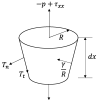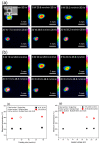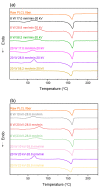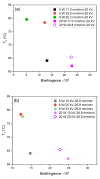Laser-Assisted Melt Electrospinning of Poly(L-lactide-co-ε-caprolactone): Analyses on Processing Behavior and Characteristics of Prepared Fibers
- PMID: 35746087
- PMCID: PMC9227632
- DOI: 10.3390/polym14122511
Laser-Assisted Melt Electrospinning of Poly(L-lactide-co-ε-caprolactone): Analyses on Processing Behavior and Characteristics of Prepared Fibers
Abstract
The laser-assisted melt electrospinning (LES) method was utilized for the preparation of poly(L-lactide-co-ε-caprolactone) (PLCL) fibers. During the process, a carbon dioxide laser was irradiated, and voltage was applied to the raw fiber of PLCL. In situ observation of fiber formation behavior revealed that only a single jet was formed from the swelling region under the conditions of low laser power and applied voltage and feeding rate, whereas multiple jets and shots were produced with increases in these parameters. The formation of multiple jets resulted in the preparation of thinner fibers, and under the optimum condition, an average fiber diameter of 0.77 μm and its coefficient of variation of 17% was achieved without the formation of shots. The estimation of tension and stress profiles in the spin-line was also carried out based on the result of in situ observation and the consideration that the forces originated from surface tension, electricity, air friction, and inertia. The higher peak values of tension and stress appearing near the apex of the swelling region corresponded to the formation of thinner fibers for the condition of single-jet ejection. Analyses of the molecular orientation and crystallization of as-spun fibers revealed the formation of a wide variation of higher order structure depending on the spinning conditions.
Keywords: birefringence; crystalline structure; crystallinity; electrical force; melt electrospinning; molecular orientation; nanofibers; poly(L-lactide-co-ε-caprolactone); thermal properties.
Conflict of interest statement
The authors declare no conflict of interest.
Figures






















Similar articles
-
Structure and Properties of Poly(ethylene terephthalate) Fiber Webs Prepared via Laser-Electrospinning and Subsequent Annealing Processes.Materials (Basel). 2020 Dec 18;13(24):5783. doi: 10.3390/ma13245783. Materials (Basel). 2020. PMID: 33352872 Free PMC article.
-
Effects of Six Processing Parameters on the Size of PCL Fibers Prepared by Melt Electrospinning Writing.Micromachines (Basel). 2023 Jul 18;14(7):1437. doi: 10.3390/mi14071437. Micromachines (Basel). 2023. PMID: 37512748 Free PMC article.
-
Bamboo Charcoal/Poly(L-lactide) Fiber Webs Prepared Using Laser-Heated Melt Electrospinning.Polymers (Basel). 2021 Aug 18;13(16):2776. doi: 10.3390/polym13162776. Polymers (Basel). 2021. PMID: 34451314 Free PMC article.
-
Melt Electrospinning of Nanofibers from Medical-Grade Poly(ε-Caprolactone) with a Modified Nozzle.Small. 2020 Nov;16(44):e2003471. doi: 10.1002/smll.202003471. Epub 2020 Oct 13. Small. 2020. PMID: 33048431
-
Melt-Spinnable Polyacrylonitrile-An Alternative Carbon Fiber Precursor.Polymers (Basel). 2022 Nov 30;14(23):5222. doi: 10.3390/polym14235222. Polymers (Basel). 2022. PMID: 36501614 Free PMC article. Review.
Cited by
-
Thermal Effects on Mechanical Strength of Additive Manufactured CFRP Composites at Stable and Cyclic Temperature.Polymers (Basel). 2022 Nov 2;14(21):4680. doi: 10.3390/polym14214680. Polymers (Basel). 2022. PMID: 36365673 Free PMC article.
-
The Rise and Refinement of Breast Thread Lifting: A Contemporary Review.J Clin Med. 2025 May 30;14(11):3863. doi: 10.3390/jcm14113863. J Clin Med. 2025. PMID: 40507620 Free PMC article. Review.
References
-
- Zhmayev E., Zhou H., Joo Y.L. Modeling of non-isothermal polymer jets in melt electrospinning. J. Non Newton Fluid. Mech. 2008;153:95–108. doi: 10.1016/j.jnnfm.2007.11.011. - DOI
-
- Li B.D., Xia Y. Electrospinning of nanofibers: Reinventing the wheel? Adv. Mater. 2004;16:1151–1170. doi: 10.1002/adma.200400719. - DOI
Grants and funding
LinkOut - more resources
Full Text Sources
Miscellaneous

